
Introduction
Companies are pouring significant resources into artificial intelligence, hoping to gain a competitive edge. But as the initial excitement settles, a critical question emerges: How do we know if these investments are actually paying off? The real challenge isn’t just implementing AI—it’s proving its value. Without a clear method for measuring the ROI of AI projects, businesses risk spending time, money, and effort on initiatives that don’t deliver meaningful results.
Recent analyses show that many organizations struggle with quantifying the value of AI in business and aligning their technology efforts with strategic outcomes. The unique nature of AI, with its potential for both direct financial gains and long-term, intangible benefits, makes traditional ROI calculations insufficient. A new approach is needed.
This comprehensive guide provides a practical, step-by-step framework for evaluating your AI initiatives. We will explore effective measurement strategies, essential metrics, common pitfalls, and best practices to help you transform AI from a buzzword into a verifiable driver of business growth.
Why Measuring AI ROI Is Different and More Complex
Traditional IT projects, like a system upgrade or software implementation, often have straightforward financial returns. You can easily point to direct cost savings or a clear uplift in revenue. However, measuring the ROI of AI projects is a different beast entirely. The benefits are frequently indirect, long-term, and harder to quantify.
Hard vs. Soft ROI: Beyond Direct Financial Gains
The first step in understanding AI’s value is to distinguish between two types of returns: hard and soft ROI.

- Hard ROI refers to tangible, easily quantifiable financial outcomes. These are the numbers that directly impact your profit and loss statement, such as cost reductions from automation, increased revenue from AI-powered personalization, or efficiency gains in your supply chain. For example, automating a manual data entry task that saves 20 hours per week at an employee rate of $40/hour results in a clear hard ROI of $41,600 per year.
- Soft ROI encompasses intangible benefits that are more difficult to measure but contribute significantly to long-term success. This includes improved employee morale, enhanced decision-making speed, greater brand loyalty, and a stronger competitive position. While you can’t always put a dollar figure on these gains, they are crucial for sustainable growth. A customer service chatbot might not only reduce support costs (hard ROI) but also improve customer satisfaction scores (soft ROI), leading to better retention over time.
A major mistake in quantifying the value of AI in business is focusing only on hard ROI. AI’s strategic value often lies in its ability to augment human capabilities, foster innovation, and build a more agile organization—all of which fall under the soft ROI category.
The Long and Winding Road to AI Value
Unlike a simple software installation, AI projects have a much longer and more complex lifecycle. This includes several stages that add to the cost and timeline, making a simple, one-time ROI calculation misleading.
- Data Readiness: AI models are only as good as the data they are trained on. Many projects require significant upfront investment in data collection, cleaning, and labeling before any development can even begin. Poor data quality is a primary reason AI initiatives fail to deliver value.
- Model Training and Tuning: Developing and training a machine learning model is an iterative process. It involves experimentation, validation, and continuous refinement, which requires specialized talent and significant computational resources.
- Change Management and Adoption: An AI tool is useless if employees don’t use it. Successful implementation requires a strong change management strategy, including employee training, workflow redesign, and clear communication about the benefits. User adoption is a critical, yet often overlooked, component of the AI ROI measurement framework.
- Ongoing Maintenance and Model Drift: AI models are not “set it and forget it.” Their performance can degrade over time as real-world data changes—a phenomenon known as model drift. This requires continuous monitoring, retraining, and maintenance to ensure the model remains accurate and effective, adding to the total cost of ownership.
Because of these complexities, the timeline for realizing returns can vary dramatically. While some projects, particularly those targeting small and medium-sized enterprises (SMEs), have reported an impressive AI investment return for SMEs of 150-400% within one to two years, others may take much longer to show a positive ROI. A successful measurement framework must account for these extended timelines and evolving costs.
An AI ROI Measurement Framework That Works
To effectively measure the return on your AI initiatives, you need a structured approach. An effective AI ROI measurement framework helps you connect technology investments to tangible business outcomes. It ensures you’re not just tracking technical metrics but also measuring what truly matters to your organization’s success. This framework can be broken down into four key phases.
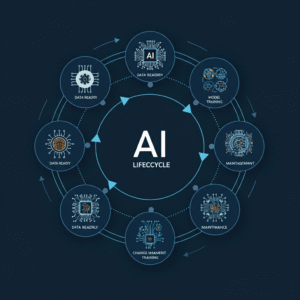
Phase 1: Define Clear Objectives Before You Start
The most common reason for failing to measure ROI is the lack of clear goals from the outset. Before writing a single line of code, you must define what success looks like in business terms.
Link AI Initiatives to Business Outcomes
Start by asking: “What specific business problem are we trying to solve with this AI project?” Your objectives should be specific, measurable, achievable, relevant, and time-bound (SMART).
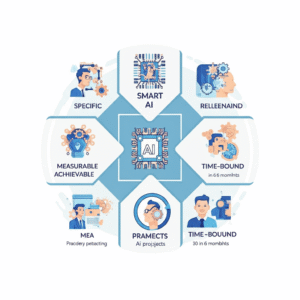
- Vague Objective: “Improve customer service with AI.”
- Specific Objective: “Reduce customer support ticket resolution time by 30% within six months by implementing an AI-powered triage system.”
- Vague Objective: “Use AI to increase sales.”
- Specific Objective: “Improve lead conversion rates by 15% in the next quarter by using an AI model to score and prioritize leads for the sales team.”
By tying every AI project to a concrete business outcome, you create a clear benchmark for success.
Establish Baseline Metrics
You can’t measure improvement if you don’t know your starting point. Before implementing any AI solution, you must document your current performance. This baseline is the “before” picture that you will compare against the “after.”
For example, if you plan to automate invoice processing, your baseline metrics might include:
- Average time to process one invoice manually.
- Number of errors per 100 invoices.
- Total labor cost associated with invoice processing per month.
Many SMEs struggle with how to calculate the ROI of AI initiatives because they never establish a clear baseline. Without it, any claims of improvement are just guesswork.
Choose a Realistic Timeline for Measurement
AI benefits don’t always appear overnight. Decide whether you will measure returns over the short term (3-6 months), medium term (6-12 months), or long term (12-24 months). A project designed to optimize your supply chain might deliver cost savings within a few months, whereas an initiative aimed at improving brand perception could take years to show a financial impact.
A two-tiered approach can be helpful here:
- Trending ROI: These are early, progress-oriented indicators that suggest your project is on the right track. Examples include improved employee productivity, faster task completion, or higher user adoption rates.
- Realized ROI: This is the direct, quantifiable financial impact, such as cost savings or revenue growth, which typically becomes visible in the mid- to long-term.
Phase 2: Identify and Track the Right Metrics and KPIs
Once you have your objectives, the next step is to select the AI project ROI metrics and KPIs that will help you track progress. These metrics should span several categories to give you a holistic view of the project’s impact.

Cost and Efficiency Metrics
These are often the easiest to measure and provide the most direct link to hard ROI.
- Labor Hours Saved: The reduction in time employees spend on manual, repetitive tasks.
- Reduced Error Rate: A decrease in mistakes that lead to rework, customer complaints, or financial penalties.
- Process Cycle Time: The time it takes to complete a process from start to finish. AI can significantly shorten cycle times in areas like document processing or approvals.
Revenue and Growth Metrics
These KPIs link your AI project directly to top-line growth.
- Uplift in Sales or Conversion Rate: The increase in sales or the percentage of users who take a desired action (e.g., sign up, make a purchase).
- Increase in Average Order Value (AOV): AI-powered recommendation engines can encourage customers to buy more.
- New Customers Acquired: AI can help identify and target new customer segments more effectively.
Customer Experience and Retention Metrics
While harder to monetize directly, these metrics are powerful indicators of long-term value.
- Net Promoter Score (NPS) or Customer Satisfaction (CSAT): Surveys that measure customer loyalty and satisfaction.
- Reduction in Customer Churn: The rate at which customers stop doing business with you.
- Improved Brand Perception: Measured through sentiment analysis of social media and customer reviews.
Risk and Strategic Metrics
These metrics capture the value of avoiding negative outcomes and building long-term capabilities.
- Avoided Costs: The financial impact of preventing events like fraud, compliance violations, or security breaches.
- Improved Decision Speed: How quickly your team can make informed decisions with the help of AI-driven insights.
- Analytics Maturity: The organization’s growing ability to leverage data and AI for strategic advantage.
Here is a sample table of KPIs:
|
Metric Type |
Example KPI |
Why It Matters |
|---|---|---|
|
Cost/Efficiency |
Hours saved per week |
Direct and immediate cost reduction. |
|
Revenue/Growth |
% increase in lead conversion rate |
Generates more revenue from the same marketing spend. |
|
Customer Experience |
NPS improvement by 10 points |
Leads to better customer retention and referrals. |
|
Risk/Strategic |
% reduction in compliance incidents |
Avoids costly fines and protects brand reputation. |
Phase 3: Calculate Total Costs and Quantify Benefits
Now it’s time to do the math. This involves a comprehensive accounting of all costs and a realistic valuation of the benefits you’ve tracked.
Identify All Cost Components
To get an accurate picture of your investment, you must consider both one-time and ongoing costs.
One-Time Costs:
- AI software purchase or platform integration fees.
- Data preparation, cleaning, and labeling.
- Initial model development and training.
- Hardware and infrastructure setup.
- Employee training and change management programs.
Ongoing Costs:
- Software subscription or licensing fees.
- Cloud computing and storage costs.
- Regular model maintenance, monitoring, and retraining.
- Salaries of the data science and IT teams supporting the project.
- Compliance and governance overhead.
Ignoring ongoing costs is a common pitfall that can lead to a heavily inflated ROI calculation.
Quantify the Benefits
This is where you convert your tracked metrics into monetary value.
- Efficiency Gains:
(Hours Saved per Week) x (Employee's Hourly Rate) x (52 Weeks) - Revenue Uplift:
(Increase in Conversion Rate) x (Average Deal Size) x (Number of Leads) - Cost of Errors Avoided:
(Reduction in Error Rate) x (Cost per Error)
For intangible benefits like improved customer satisfaction, you may need to use estimations. For example, you could correlate a 10-point increase in NPS with a 1% reduction in customer churn and then calculate the financial value of that retained revenue. Be conservative with these estimates to maintain credibility.
Apply the ROI Formula
With your total costs and benefits quantified, you can use the standard ROI formula:
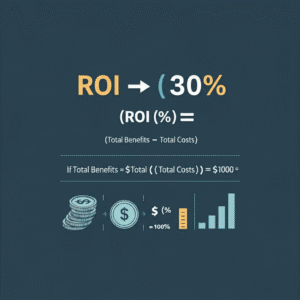
ROI (%) = [ (Total Benefits – Total Costs) / Total Costs ] x 100
For example, let’s consider an AI-powered recruiting tool implemented by a mid-sized company.
- Total Annual Costs: $250,000 (including licenses, training, and maintenance).
- Total Annual Benefits:
-
- Reduced time-to-hire: $150,000 (saved recruiter hours).
- Improved quality of hires (lower turnover): $100,000 (avoided replacement costs).
- Increased productivity from better hires: $100,000 (estimated value).
- Total Benefits: $350,000
- Net Benefit: $350,000 – $250,000 = $100,000
- ROI: ($100,000 / $250,000) x 100 = 40%
This demonstrates how to calculate the ROI of AI initiatives in a clear, defensible way.
Phase 4: Review, Interpret, and Communicate Results
Your work isn’t done after the calculation. The final phase is about turning your data into action.
Monitor and Re-evaluate Continuously
ROI is not a one-time snapshot. Use dashboards and regular reports to continuously track your KPIs. AI models can drift, business conditions can change, and new opportunities can emerge. Periodically re-evaluate your ROI to ensure the project continues to deliver value. If performance declines, you may need to retrain the model or adjust your strategy.
Interpret Beyond the Numbers
A high ROI is great, but it’s equally important to understand the “why” behind the numbers. What worked well? What didn’t? A productivity gain might not just save money; it could also lead to higher employee satisfaction and reduced burnout. Dig deeper into the results to uncover these secondary benefits and learn lessons for future projects.
Communicate to Stakeholders
Finally, share your findings with key stakeholders. The way you communicate should be tailored to your audience.
- For the CFO: Focus on the financial metrics—hard ROI, cost savings, and payback period.
- For the COO: Highlight operational improvements, such as reduced cycle times and error rates.
- For the CEO: Present a high-level summary that connects the AI project to strategic goals, competitive advantage, and long-term innovation.
A simple one-page summary detailing the investment, the achievements, and the next steps can be a powerful tool for building support and securing funding for future AI initiatives.
Common Pitfalls and How to Avoid Them
Even with a solid framework, many organizations stumble when measuring the ROI of AI projects. Here are some common pitfalls and how to sidestep them.
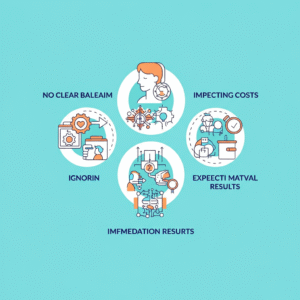
- Pitfall 1: No Clear Baseline or Objectives. Without a starting point, you can’t measure progress.
- Solution: Before starting any project, meticulously document current performance and define specific, measurable business goals.
- Pitfall 2: Choosing Vague or Irrelevant Metrics. Tracking metrics that don’t align with business outcomes is a waste of time.
- Solution: Select KPIs that are directly linked to your project objectives and matter to your stakeholders.
- Pitfall 3: Ignoring Ongoing Costs and Model Drift. Many ROI calculations only consider upfront costs, leading to an artificially high number.
- Solution: Account for all ongoing expenses, including maintenance, subscriptions, and the cost of retraining models to combat performance degradation.
- Pitfall 4: Expecting Immediate Results. AI is a long-term investment. Expecting a massive return in the first few months can lead to premature disappointment.
- Solution: Set realistic timelines and use a combination of trending and realized ROI metrics to show progress along the way.
- Pitfall 5: Focusing Only on Direct Returns. Overlooking intangible benefits like improved decision-making, enhanced brand reputation, or strategic agility means you’re not capturing the full value of your investment.
- Solution: While harder to quantify, make an effort to estimate the value of soft ROI and include it in your overall assessment.
Conclusion: Turning Measurement into a Strategic Advantage
Measuring the ROI of AI projects is not an optional exercise—it is an essential discipline for any organization serious about leveraging technology for growth. Without it, AI initiatives risk remaining costly experiments rather than becoming true drivers of business value.
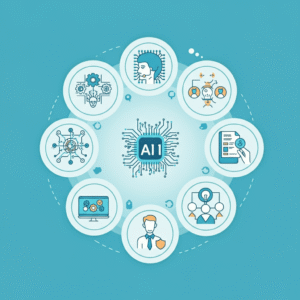
By adopting a structured approach—defining clear objectives, selecting meaningful metrics, meticulously calculating costs and benefits, and communicating results effectively—you can move beyond the hype. You can build a compelling, data-backed case that demonstrates the tangible impact of your AI investments. This disciplined approach to quantifying the value of AI in business not only justifies past spending but also builds the confidence and momentum needed to scale your AI efforts and secure a lasting competitive advantage.





Leave a Reply